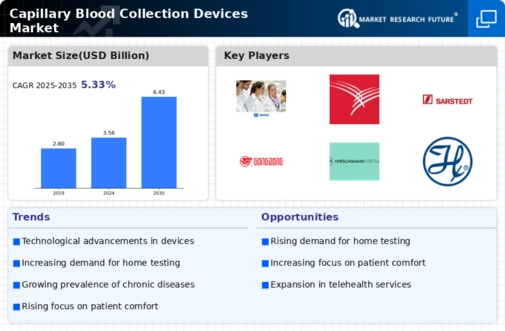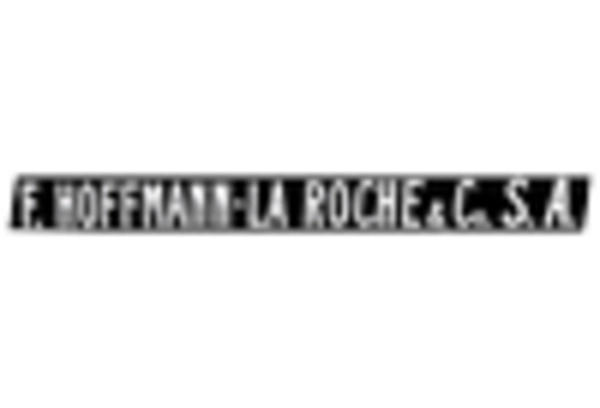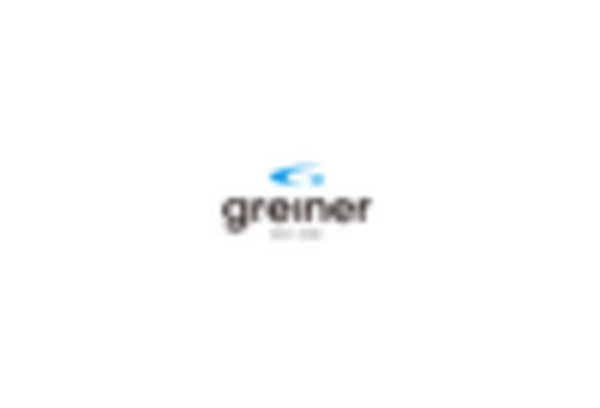Market Analysis
In-depth Analysis of Capillary Blood Collection Devices Market Industry Landscape
The Market Capillary Blood Collection Devices Market has witnessed a surge in demand, driven by the growing need for efficient and less invasive blood sampling methods. These devices play a crucial role in healthcare settings, enabling healthcare professionals to obtain small blood samples from capillaries, typically from a fingertip or heel. The market's growth can be attributed to the increasing prevalence of chronic diseases such as diabetes and cardiovascular disorders, where regular blood monitoring is essential for proper management. Additionally, the rise in point-of-care testing and the growing emphasis on home-based healthcare further contribute to the expansion of the market.
One of the key factors driving the adoption of capillary blood collection devices is the convenience they offer in comparison to traditional venous blood collection methods. Patients often prefer the less painful and quicker process of capillary blood sampling, making it an attractive option for routine monitoring and diagnostic purposes. This is particularly significant in pediatric and geriatric populations, where traditional venipuncture may pose challenges. As a result, the market has witnessed a shift towards the use of capillary blood collection devices, fostering a more patient-centric approach in healthcare.
Technological advancements have played a pivotal role in shaping the Market Capillary Blood Collection Devices Market. The development of innovative devices with features like one-touch operation, user-friendly interfaces, and safety mechanisms has enhanced their usability and reliability. Manufacturers are investing in research and development to introduce devices that provide accurate and consistent results while minimizing the risk of contamination. Furthermore, the integration of smart technologies, such as connectivity options for seamless data transfer to electronic health records, has positioned these devices at the forefront of modern healthcare practices.
The COVID-19 pandemic has also influenced the market dynamics of capillary blood collection devices. With an increased focus on decentralized testing and remote patient monitoring, the demand for these devices has experienced a notable upswing. The pandemic underscored the importance of rapid and accessible diagnostic tools, and capillary blood collection devices emerged as valuable tools in supporting efficient testing strategies, especially in resource-constrained settings.
Geographically, the market for capillary blood collection devices has witnessed significant growth in both developed and developing regions. North America and Europe have been early adopters of advanced healthcare technologies, contributing substantially to the market's expansion. Meanwhile, in developing regions, the market is driven by factors such as rising healthcare awareness, improving healthcare infrastructure, and government initiatives promoting point-of-care diagnostics.
However, challenges persist in the Market Capillary Blood Collection Devices Market, including concerns related to the accuracy of results obtained through capillary blood sampling and the potential for hematocrit interference. Additionally, stringent regulatory requirements for approval and the presence of alternative blood collection methods pose obstacles to market players. Nonetheless, ongoing research and development activities aim to address these challenges and further enhance the performance and reliability of capillary blood collection devices.


















Leave a Comment